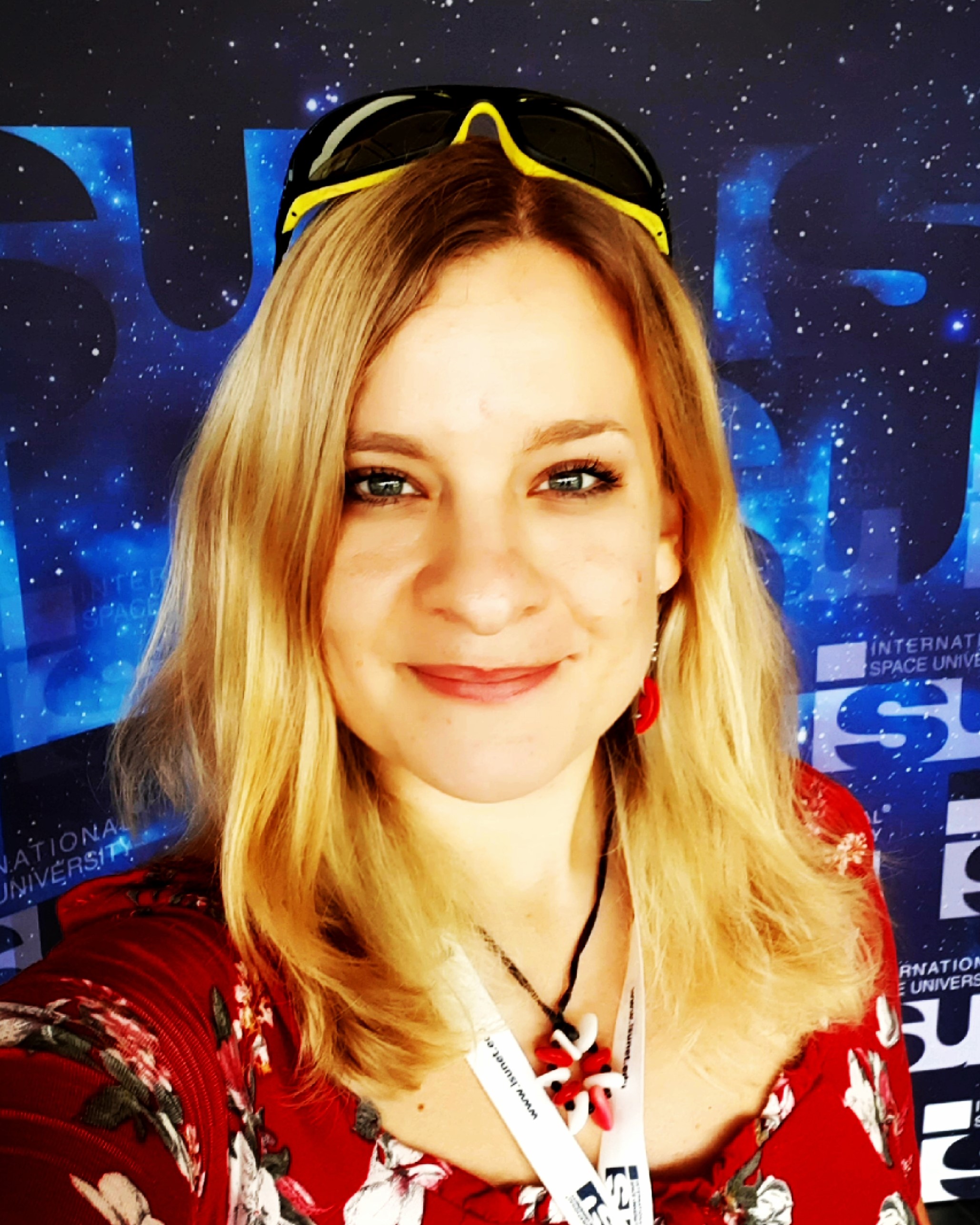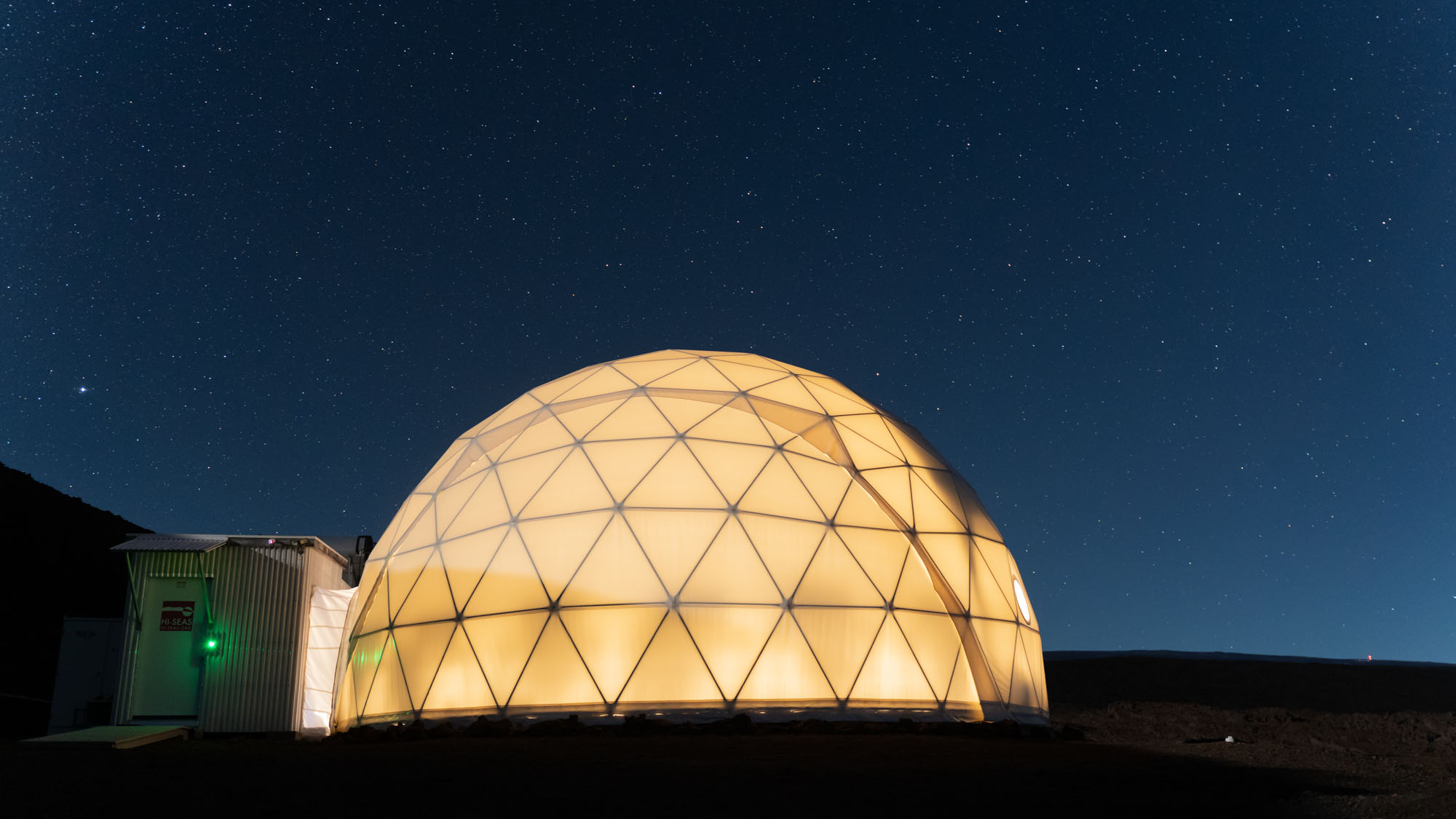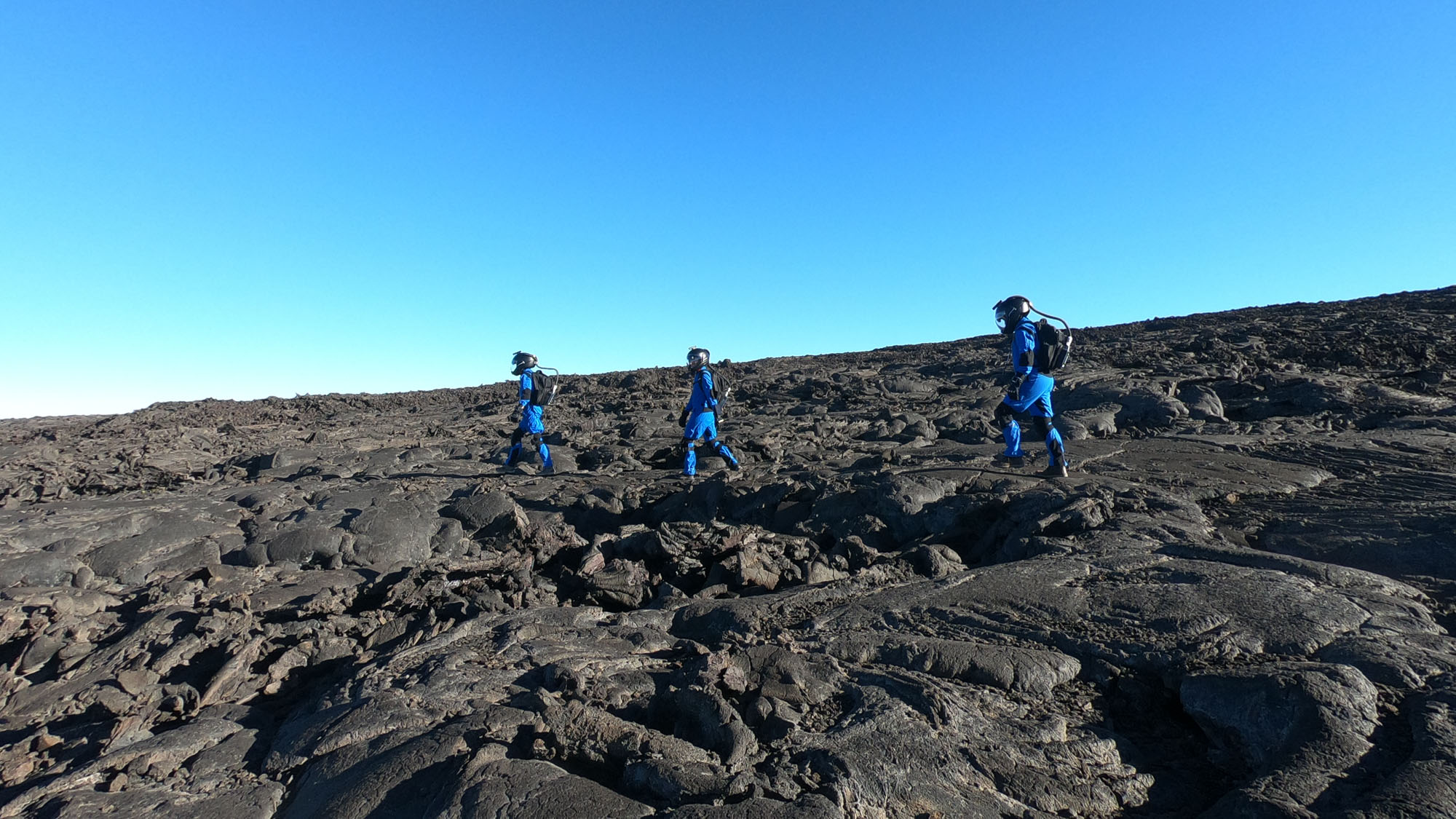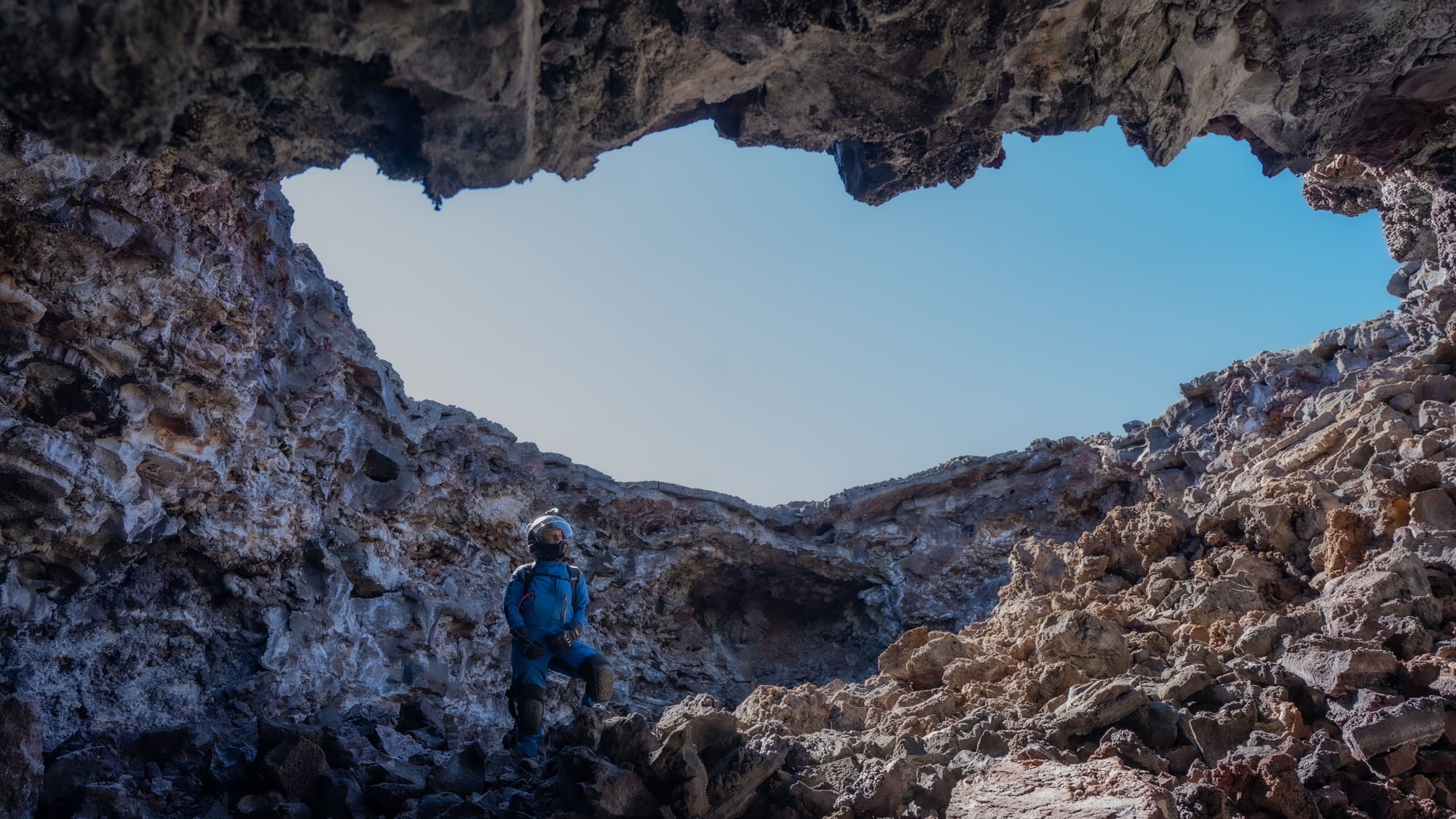Avoiding digestive problems is part of daily activities on the moon for the Sensoria M3 crew — Commander's report: lunar day 6
The Sensoria M3 crew is doing their best to deal with the physiological challenges they are facing during their simulated moon mission at the HI-SEAS habitat.

Dr. Michaela Musilova is the director of Hawaii Space Exploration Analog and Simulation (HI-SEAS) program, which conducts analog missions to the moon and Mars for scientific research at a habitat on the volcano Mauna Loa. Currently, she is in command of the two-week Sensoria M3 mission and contributed this report to Space.com's Expert Voices: Op-Ed & Insights.
Commander's report for the Sensoria M3 mission at HI-SEAS
Lunar day 6 (Dec. 9, 2020)
I was surprised when the Selene II crew started their tradition of 100 pushups and situps. It was not an evening activity that I expected the crew to desire doing. The SENSORIA M3 surprised me further with a new game: fiber-pong. It is essentially a lunar version of beer pong. Every night, our dining room table is quickly transformed into a ping-pong table of sorts. We don't have any alcohol on our analog moon mission, so beer has been replaced with dietary fiber. Also, we don't want to waste our precious water, so we use random objects from socks to Lego pieces to fill the bottoms of the cups we use in the game to stabilize them.
Why fiber? Our drink of choice is water mixed with powdered fiber, as the crew is very cautious about not getting any digestive disorders. The HI-SEAS Medical Director Dr. Joseph D'Angelo warned us about the risks of medical problems caused by the freeze-dried food on missions, such as constipation and worse. Joseph is our chief medical officer as well, which means that he is the doctor for the crew and supervises the mission medical officers. During the recent missions, I have been acting as the crew medical officer as well as the commander. I have first aid and wilderness first aid training that qualifies me for this role. We specifically recruit medically trained crewmembers for some missions that have a focus on human-related research. We also work with specialists in medicine to test and improve our emergency medical procedures during analog missions.
Related: The start of the Sensoria M3 lunar mission is like Groundhog Day — Commander's Report: Lunar Day 2
The SENSORIA M3 lunar analog crew is determined to avoid any medical problems "on the moon," so fiber is very much on the menu. Our analog astronaut food lacks a number of important vitamins, minerals and other nutrients, which is why we have to ingest dietary supplements on a regular basis. Without them, we risk suffering in different ways during the mission. Why not make a game out of supplements, then? I definitely don't mind as long as the crew doesn't overdose on them. Fortunately, the fiber is not very pleasant to eat or drink, which is why ingesting it, as part of the game, seems to be the best way to motivate the crew to consume it.
Apart from that, the crew has not been needing any extra motivation to focus on their research. They have been almost too motivated to work on their projects and go on moonwalks. I say "too motivated" because they are so eager to do these activities that I worry sometimes that they may be overworking themselves. Some crewmembers can get exhausted on a mission if they're not careful. This is why being the commander can be difficult at times, as I have to put my foot down for some matters and the crewmembers may not always realize that it's in their best interests that I do so.
Breaking space news, the latest updates on rocket launches, skywatching events and more!
My current crew has been pretty understanding though. They have still been able to achieve a number of goals despite having to go at a slower pace. Habitat Operations Officer Lea Smart Miller and Chief Engineer Niko Blanks used the past few days to wear Hexoskin smart shirts under their EVA (extravehicular activity) suits in order to gather data on heart rate, breath rate and activity to define energy expenditure during our moonwalks. The data from the Hexoskin smart shirts is also being paired with cognitive workload assessments for before, during and after EVAs. The two have gone on a total of four EVAs so far and will be collecting further data as the mission continues.
Chief Science Officer Emily Seto has been simulating an astronaut-drilling mission to search for signs of life using a Honeybee Robotics' surface coring drill that has been designed to acquire astrobiological samples. The coring bit is using Honeybee-patented core break off technology, which has been selected for the coring drill of NASA's Mars 2020 rover Perseverance (drilling will be the first step in the Mars sample-return campaign). Understanding the distribution of microbial life in analog environments such as lava tubes can provide critical clues for biosignatures in permanently shadowed areas on the moon and or Mars. I have been helping Emily with her research projects, while Vice Commander James Ward has been documenting our work — particularly the day and night moonwalks.
In the habitat, Science Communication Officer Gianna McLaren has been spending her time documenting her experience as an analog astronaut from the perspective of one completely new to the space community, writing for the National Space Society's Ad Astra magazine. She is also writing a book about the various adventures that have formed her obsession with exploration and persistent questioning of what is considered possible. This includes a reclusive 9-month stay in France at the age of 16, to several years stationed around the United States in various National Forests, to getting her racing license driving a Formula 3 car at Sonoma Raceway and finally, settling into life in Marin County, California. She views getting involved in the rapidly evolving movement of space exploration as the next big adventure.
Part of the crew has just come back from a night moonwalk. Filled with positive energy from the beautiful views outside, the crew reunited in the habitat amongst a lot of laughs. I forgot how badly we smell after we come back from moonwalks. Crewmembers always need a bit of time to accept that smell of sweat from our bodies and on our equipment. I always wonder how quickly the crew will get used to this smell. Usually it takes a few days, but some people struggle throughout the whole mission due to the smells. I'm grateful that my nose can selectively ignore those smells, but still be on high alert for dangerous smells such as chemicals, propane gas, something burning and many others. Crews joke that I'm like a dog when it comes to those smells — I instantly go investigating where the smell is coming from and then I make sure that they hear all about it. We can't risk anything bad happening to our life support systems!
Commander Musilova signing off to some pre-bedtime fiber-pong with the crew.
Follow Michaela Musilova on Twitter @astro_Michaela. Follow us on Twitter @Spacedotcom and on Facebook.

Dr. Michaela Musilova is an astrobiologist with a focus on life in extreme environments. She has a PhD degree from the University of Bristol and is a graduate from the International Space University's (ISU) Space Studies Program. Michaela's space research experience includes working at the NASA Jet Propulsion Laboratory, University of London Observatory, Canada-France-Hawaii Telescope, on NASA's and the U.K. Space Agency's MoonLite project, being an analogue astronaut and Commander of numerous simulated missions to the moon and Mars at the HI-SEAS station in Hawaii, and at the Mars Desert Research Station in Utah. Michaela is currently the Director of HI-SEAS, as part of the International MoonBase Alliance. She is also a visiting Professor at the Slovak University of Technology, Vice-Chair of the Slovak Organisation for Space Activities, Adjunct Faculty at ISU and the Senior Research Adviser for Mission Control Space Services Inc.
She has received numerous prizes and grants, including the Emerging Space Leaders Grant from the International Astronautical Federation (2016) and the Women in Aerospace – Europe Young Professional Award (2016), and she was selected as one of the most promising 30 under 30 by Forbes Slovakia (2015). Michaela is also actively involved in the Duke of Edinburgh's International Award, as a patron of the program in Slovakia and an Emerging Leader Representative for Europe, Mediterranean and Arab states. Furthermore, she enjoys participating in STEAM outreach activities from teaching at schools, giving public presentations, to working with the media and more, as well as encouraging people to pursue their dreams. For instance, she is an Advisory Board Member of the STEM Punks immersive programs for students and teachers.




